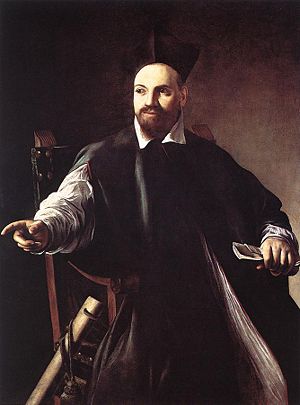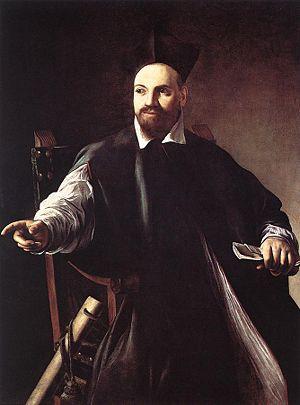This Sunday, we open Bodies and Shadow: Caravaggio and His Legacy. Members see it first, with exclusive preview days this Thursday through Saturday.
The multimedia tour of the exhibition includes an interview with Keith Christiansen, Chairman of European Paintings at the Metropolitan Museum of Art. Keith tells an extraordinary story, about being invited to view a rarely-seen painting with an uncertain attribution in Florence. The portrait features Maffeo Barberini, one of Caravaggio's patrons after he moved to Rome in 1592.

Caravaggio, Portrait of Maffeo Barberini, c. 1598, oil on canvas, private collection.
CHRISTIANSEN: About three years ago, a friend of mine in Florence said, "Keith, would you like to see this picture? Because I think you really ought to." I said, "Oh, absolutely. I've never seen it." So, it was arranged for me to make a visit to the Corsini Palace.
I took one look at it, my mouth dropped and I said, "This is by Caravaggio. There's absolutely no question of this whatever in my mind."
In particular, look at this marvelous hand that's on the chair. This is really an absolute signature of Caravaggio. The way the light plays across the fingers, touching the various fingers and defining the placement of the fingers in space.
Have a close look at the eyes, which are simply beyond belief. They've watered up. He's captured the light playing on the water in the eyes, and the marvelous delineation of the eyelids and of the lower eyelashes.
If you are painting from the model, you have to have some way of making an initial notation on the canvas of the pose of the figure. Caravaggio did this with a very quick brush drawing, just little notations, and this very quick brush stroke is like his handwriting. To me, it's like looking at a letter from somebody.
The person I was with said, "How are you so sure?" I said, "First of all, it's just plain the sheer quality of the picture. But take a look at that shoulder. Handwriting. It's absolutely him."
Keith also had some thoughts to share about the artist's legendary temperament, and how his notorious personality misleads us in understanding Caravaggio's intentions as an artist.
CHRISTIANSEN: I was looking at an interview with Alfred Hitchcock the other week. The interviewer said, "All of your pictures are about violence and crimes and fear. How does this relate to your character?" He said, "Well, actually it doesn't. What an artist does is very unrelated to his character. What interests me is the way in which people respond to the events that I portray."
"Bingo!" I thought. That's Caravaggio! What he's interested in is not transferring his life into his pictures, but of his pictures engaging people. He wanted them to attack us in the guts. He wanted to really get us. These pictures are testaments to his understanding of the way viewers respond to works of art. It changes the game in painting. It's no longer about people's ideas of "What is a great work of art? What is beauty about?" It's about getting under your skin, and pulling you into a picture in a new way.
Bodies and Shadows: Caravaggio and His Legacy opens to the public on November 11th.
Amy Heibel



